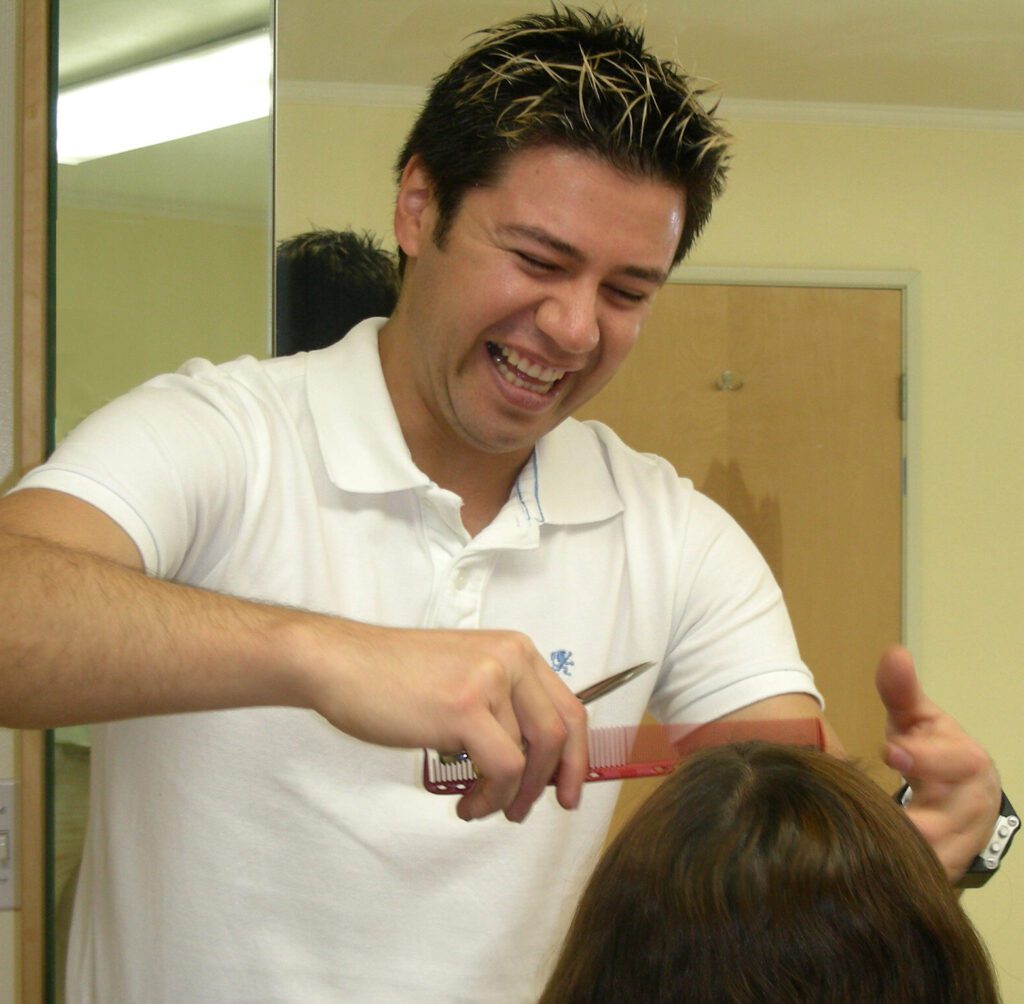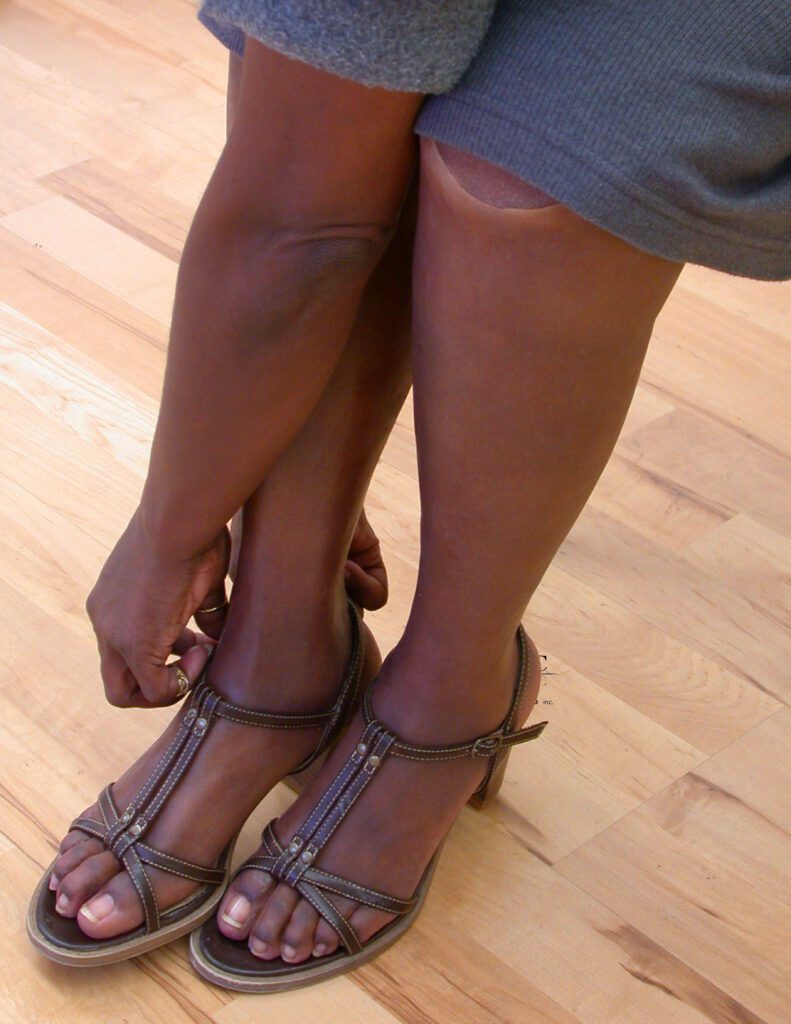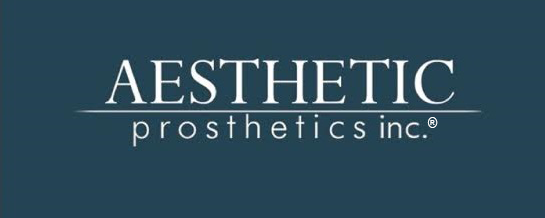Real Stories
Tyler
My name is Tyler Tavares, and I am from Hawaii. I was an extremely active athlete until I contracted Strep A into my bloodstream after paddling canoes on December 2nd, 2020 in ocean that had been contaminated.
Soon after, I went into septic shock and the hospital administered medicines to keep my blood flow in my main organs to keep me alive but that meant little or no circulation to my hands and feet. Since I was so healthy, I was able to keep my hands moving however my feet really suffered.
My right foot recovered for the most part (only losing two tips of two toes) but sadly enough I ended up losing all 5 toes on my left foot. This was life changing and devastating to me. I could not imagine wearing sandals to work and not being able to do all my day-to-day exercises including biking, yoga, paddling, pickleball, weight training and stand-up paddling.
I made numerous inquiries for a prosthetic and in February, 2022, I discovered Aesthetic Prosthetics! This day was one of the happiest days of my life. I was able to personally chat with Stefan who assured me that he could fabricate something that would work with my lifestyle and that I would be able to wear my cute sandals someday! It all sounded too good to be true after what I had been through.
We were able to arrange a date for my first visit. On March 9th, 2022 I traveled to Pasadena and spent three days there. When I departed three days later, I returned home with a temporary!
Today that temporary fits in my reef walkers which I wear when I paddle in the canoe!
I returned on April 11, 2022 for another visit. In a few days, Stefan had mixed many colors, created a few more molds and sent me home with the most beautiful prosthetic ever!
I have been enjoying showing it off to all my doctors, friends, customers, and family. It seems nobody in Hawaii has ever seen anything like this. I also recently attended my high school reunion that reunited me with old friends who came together to support a gofundme page that supported this prosthetic so it was an extra special reunion so that they could all see what they contributed to! The nails even got painted for this occasion which looked even more amazing!
This prosthetic has literally given me my life back. I can’t say enough about Stefan and Beth. I will be forever grateful to them and Aesthetic Prosthetics!

Jose
Jose, a hairstylist, struggled to find a practitioner to make prostheses that fit right for his three missing fingers. The fingers would be too big, too loose, too tight, or the color would be completely different from that of his skin. Since his hands are very close to his customers’ faces, both their appearance and function matter to his livelihood. He has been a customer of Aesthetic Prosthetics now for years, and he says that it makes it possible for him to continue to work in his trade.
“Since they started working with me, I always tell them how I feel and what should be different. I’m a hairstylist and I use my hands every day.” Jose knew that he could more easily hold a pair of shears if his prosthetic fingers were slightly bent and a little smaller and thinner. Aesthetic Prosthetics staff listened to his needs.
Jose knows a lot of people who are handicapped, and wishes he knew how to approach them to tell them how much a good prosthesis could improve their lives. “Some of those people do not know that they have a choice to have something done to look better. If people notice that you are handicapped they keep staring at you.” Jose says they do not stare at him any more–since no one can tell that three of his fingers are silicone! “People do not really know about all these choices that they have,” he muses.
To Aesthetic Prosthetics, Jose says: “You know, you guys are my heroes. You saved my life.” Jose doesn’t feel that everyone would be comfortable having him work on his or her hair otherwise. “My hand is not very good-looking without the prosthetics. People would be afraid of me.” Jose’s hand looks so natural that customers rarely notice that he is an amputee.
Simone
Simone marched on after she lost first one leg and then the other. She wore out many prostheses and dozens of pairs of tennis shoes and flats. But for about twenty years, she had not worn heels. She imagined herself in thong high-heeled shoes and legs that matched her African-American skin. Once Simone saw samples of Aesthetic Prosthetics’ work, she knew where she would get her dream legs.
What was different from her old prostheses? “Everything,” she says. “The color is exactly my skin color,” which she says is a big difference from what she was used to. She explained that her previous choice had been between very pale, a reddish brown (“nobody is that color” she says emphatically) or almost black. Her new legs “have a whole depth. “It makes me feel like a woman,” Simone says, a smile in her voice. “Until I was able to wear heels again and wear my color, I didn’t realize how much was taken from me. I never felt like a woman in my other life.”
Before she had her legs from Aesthetic Prosthetic, she just couldn’t dress up and have “the things that are important to girls.” She did not want her amputations to be the first topic of conversation with everyone.


Now, “If I wear something short above my knees people think I have on some sort of crazy cool boots. Or they think maybe it’s just a bandage around my knee.” But these legs aren’t just for admiring looks. “I walk my dog 45 minutes twice a day,” she says, and the only time she is out of her prostheses is when she is asleep. Simone’s friends all know that she has two prosthetic legs, but the artistry of the illusion moves their focus to other aspects of her personality and her life.
About losing limbs, Simone says, “Life’s not over. There is so much that can be done. It may not be fair. It’s not fair that anyone loses a limb. It’s okay to be angry. Where do you go from there? Do you sit in your house and be negative and self-hating and no one wants to be near you, or do you get out and live life again? And now we can do that. I don’t want anybody to be stuck like that.” She muses that people who are new to the idea of using a prosthesis worry about falling. She gives them tough love, forged through her own experiences: “You fell when you had two feet. You’ll get up and learn what you are trying to do better. I want people to see through the negative stuff and see the positive stuff. There’s nothing to feel sorry for.”
Simone summarizes her life: “We have wonderful things and people like Stefan are just making them better. My legs are better than Heather Mills’. Much better!”
She advises that the most necessary thing to get back into the swing of life after losing a limb is motivation and a refusal to give in to complacency. Viola declares that it’s important to expose people to what is possible, and to talk about it– to show them a reason to hope, and to show them what they can achieve if they aspire to it. Meanwhile, she’s far too busy to let a little thing like a prosthetic limb break her stride–she has too many people to help and inspire.


Ted
Ted used a hook for his left hand for several years until he learned that his insurance would cover a more realistic hand. He works as an accountant, yet struggled to find a prosthetic hand that would endure daily use. The first realistic hand he had made only lasted two weeks. He was sent to a practitioner in another state for a new hand, but it only lasted a month. The third hand again just lasted a couple of weeks. He finally found a durable realistic prosthesis after coming to Aesthetic Prosthetics.
Ted says, “I think Stefan is a true artist. He’s more than an artist. It takes more than just art to make this. It has to also endure. I’ve had it now [for six months] and I only see one pin-type flaw. I think that’s really saying something.” But the durability does not compromise the appearance of his hand. “It’s more realistic than anything I’ve ever had. I feel very comfortable with it going out in public. I feel very confident about my appearance.”
A realistic hand that does not look good, Ted says, draws more attention than a hook. With his new hand, “I could be sitting at a dinner table and have both hands on the table and they’d never know it’s a prosthesis.” Ted says that he meets new people and forgets to tell them that his left hand is missing. If they notice that he doesn’t move one hand as much as the other, he says, “I forgot to tell you–I don’t have a hand!”
What advice would Ted give someone who has recently lost a limb? “I would advise them to see Stefan. In fact I did just that two days ago. A guy lost his leg just below the knee and I showed him my hand. He was very encouraged. You could see the glow come over his face.” Ted told the man, “With the right therapy you could be standing six feet tall again.” Ted says that he hears a lot of hype about modern technology and prosthetics, but he pronounces his Aesthetics Prosthetics hand “the best I’ve seen.”
Viola
“What was important to me,” Viola says, “was to return to independence. And in order to do that, I needed to have the tools to work with. And that tool was my prosthesis.” Viola radiates many things–hope, energy, optimism–while barely even acknowledging that she has lost a leg.
Viola does not want anything to slow her down. “To be fortunate [and] blessed enough to have [a prosthetic leg] that was the same shape and color as my leg, a leg of color– it was just fantastic. So when I wear dresses it is not obvious.” She marvels at the fact that there are subtle freckles on her prosthesis that match the ones on her leg exactly.
Viola moves quickly away from the topic of her prosthesis to enthuse about her business and volunteer activities.
It is clear that she does not accept anything but full-out effort from anyone, least of all herself. Among many other things, she runs a business tutoring students “for excellence,” in particular for better performance on the SAT and PSAT exams. She swells up with pride when she talks about a very successful student who recently invited Viola to her high school graduation. Viola is also looking into getting a PhD in addition to her existing degrees, and enjoys volunteering for political campaigns.
She advises that the most necessary thing to get back into the swing of life after losing a limb is motivation and a refusal to give in to complacency. Viola declares that it’s important to expose people to what is possible, and to talk about it– to show them a reason to hope, and to show them what they can achieve if they aspire to it. Meanwhile, she’s far too busy to let a little thing like a prosthetic limb break her stride–she has too many people to help and inspire.
